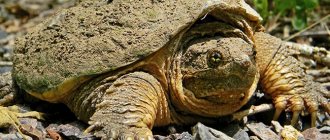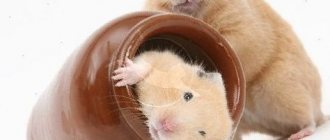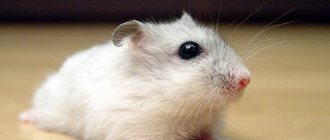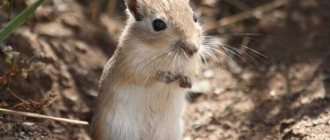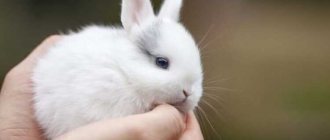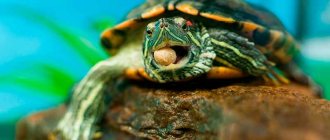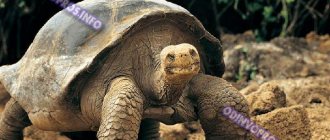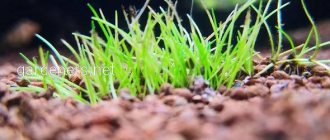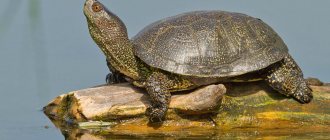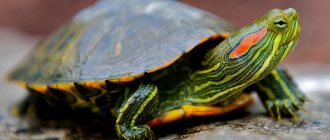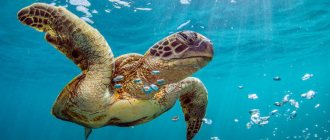Turtles belong to the order of reptiles. There are at least 328 species. All of them are divided into marine and terrestrial, the latter can be land and freshwater.
The variety of turtle species is amazing. The largest can grow up to 2.5 m in length and weigh more than 900 kg. Once upon a time, larger individuals lived in Africa, Australia and America, but they became extinct after the appearance of humans.
Scientists, studying the preserved skeletons, came to the conclusion that the Archelon sea turtle reached 4.5 m in length and weighed up to 2.2 tons. There are not only such giants, but also smaller species, they can fit in the palm of a person.
The smallest turtles in the world weigh only 124 g and do not grow more than 9.7 cm. You will learn more about them and other small species from our article and see their photos.
Top 10 smallest turtles in the world
Turtles belong to the order of reptiles.
There are at least 328 species. All of them are divided into marine and terrestrial, the latter can be land and freshwater. The variety of turtle species is amazing. The largest can grow up to 2.5 m in length and weigh more than 900 kg. Once upon a time, larger individuals lived in Africa, Australia and America, but they became extinct after the appearance of humans.
Scientists, studying the preserved skeletons, came to the conclusion that the Archelon sea turtle reached 4.5 m in length and weighed up to 2.2 tons. There are not only such giants, but also smaller species, they can fit in the palm of a person.
The smallest turtles in the world weigh only 124 g and do not grow more than 9.7 cm. You will learn more about them and other small species from our article and see their photos.
Features of character and lifestyle
Photo: Leatherback turtle
Sea turtles have a calm nature. They are leisurely, although they are capable of swimming quite quickly and well. Sea turtles spend their entire life in water. Turtles stay in shallow water near the shores, however, when hunting they can dive deep into the water and stay there for a long time.
All sea turtles make long migrations in order to have offspring. No matter how far turtles are from the warm tropical shores where they were once born, when the time comes, they return there to lay eggs. In this case, one turtle always forms a clutch in the same place. Turtles breed at the same time and on the shores during the breeding season you can see hundreds of females laying eggs.
The social environment of sea turtles is undeveloped. Turtles most often live alone. Young turtles, hiding from predators, spend almost all their time in algae thickets, where they can feel safe. Older turtles swim freely in the water. Sometimes sea turtles like to bask in the sun by climbing on rocks.
Under poor environmental conditions and lack of food, sea turtles are capable of falling into a kind of suspended animation. At this time, turtles become lethargic and eat little. This helps turtles survive during winter. In winter, turtles sink to the bottom and can live anaerobically for a long time without swimming to the surface.
Atlantic Ridley
This species is considered the smallest among sea turtles, as well as the fastest growing. An adult turtle can grow up to 77 cm and weigh up to 45 kg. They have a gray and green carapace, shaped like a heart, but the young are usually gray-black. Females are larger than males.
The Atlantic ridley has chosen the Gulf of Mexico and Florida as its habitat. Prefers shallow water. They feed on small marine animals, but if necessary they will easily switch to plants and algae.
Mating season
Reproduction in reptiles occurs at different times. It depends on the location and type of animal. But all members of the class have similar traits. For the right to fertilize a female, males enter into battle with each other. Land turtles try to turn over or force their opponent to retreat by striking them with their shells. After the competitor leaves the battlefield, the winning male begins courtship. At the same time, he tries to ensure that the female takes the best position for mating.
To attract a mate, the male strokes her face with his limbs or sings.
Females dig holes in the sand to lay eggs. They also often use crocodile nests or their own burrows. The masonry is securely covered with soil from above, and then compacted with light blows of the shell.
The surface of the eggs is covered with a leathery membrane or shell. There are up to 190 of them in the clutch. The incubation period is 91 days. The female lays several clutches during the mating season.
Turtles are solitary reptiles. They look for a mate only during the mating period.
Far Eastern
A freshwater turtle that is especially common in Asia. In some countries they eat it, so it is bred on farms. The length of the carapace of the Far Eastern tortoise is no more than 20-25 cm, but occasionally there are individuals in which it grows up to 40 cm, with a maximum weight of 4.5 kg.
She has a round shell covered with soft greenish-gray skin, with small yellow spots visible on it. The limbs and head are also gray, slightly greenish.
It can be found in Japan, China, Vietnam, and in our country - in the Far East. The Far Eastern turtle chooses fresh water bodies, lakes or rivers for life, and can live in rice fields. During the day it likes to bask on the shore, but in extreme heat it hides in damp sand or water. If frightened, it will bury itself in the bottom silt.
Spends a lot of time in the water, swimming and diving. If you catch a turtle in the wild, it will behave aggressively, bite, and its bites are very painful.
Vulture
The snapping (alligator) turtle lives in fresh water bodies in America. Most often found in Mississippi and Illinois rivers. It differs from its fellows in its aggressive behavior. If you catch a snapping turtle, whose length reaches 1.5 meters and weighs 60 kg, it will fiercely resist, try to bite the enemy with powerful jaws and release a hissing stream of liquid from the anal glands. These animals are predators and feed mainly on fish. The alligator turtle lowers its head into the pond, sticks out the thin tip of its tongue, reminiscent of a worm, and waits for the fish to grab onto it. Afterwards, she catches the prey with her teeth and chews it.
Interesting! The shells of all aquatic turtles eventually become covered with algae, which become food for fish.
European marsh
Its full name is European marsh turtle , and is a freshwater turtle. The length of its carapace is about 12-35 cm, maximum weight is 1.5 kg. Adult turtles have a dark olive or brown carapace, some are almost black, covered with small yellow spots.
The skin of the turtle itself is dark, but there are many yellow spots on it. The eyes have orange, yellow or reddish irises. As the name implies, it can be found in Europe, as well as in Central Asia and the Caucasus, etc.
The European turtle chooses swamps, lakes, and ponds to live, avoiding fast-flowing rivers. She is a good swimmer and diver and can stay underwater for a long time, but she usually comes to the surface every 20 minutes.
If it notices danger, it hides in the water or buries itself in mud, and can run under stones. It is active during the day and loves to bask in the sun. Overwinters at the bottom of reservoirs, buried in silt.
Caring for Miniature Turtles
Semi-aquatic or aquatic pet turtles need to be in the water most of the time. Therefore, before buying a turtle, you should set up an aquaterrarium. The animal should not walk around the apartment, as it may catch a cold or get injured. If you want your reptile to live as long as possible, you need to know how to care for an aquatic turtle and what conditions are needed for comfortable keeping. A small pet turtle should feel as if it were in its natural habitat.
So, a turtle should be kept at home, adhering to the following recommendations:
- The size of the aquarium should be 3-5 times larger than the animal itself. Reptiles love space, so the larger the turtle house, the better.
- Only half of the terrarium needs to be filled with water; the rest of the space will be used for sushi.
- In order for the reptile to rest on land, place large, rough stones and branches on the bottom of the aquarium under a lamp.
- The lamp should be ultraviolet, since only such lighting contributes to the proper production of calcium in the body.
- You can pour fine sand on the bottom, but then changing the water will be more difficult.
- The water temperature should be about 25 degrees, on land at least 28 degrees.
- Change the water once a week. Before the procedure, it is important to wash your hands with soap to avoid infection.
- Decorate the aquarium with artificial plants on the bottom, and live aquatic plants can float on the surface of the water, which can serve as additional food.
There is no need to install a food bowl so as not to spoil the water with rotting food that the animal will not finish. It is better to place the turtle in a bowl each time and feed it in it.
If you set up your terrarium according to these recommendations, believe me, your little aquarium turtle will be grateful to you. She will be mobile, will not get sick, and will delight you with her presence in your home for many years.
red-eared
Belongs to the family of American freshwater turtles. Its other name is “ yellow-bellied .” It is believed that the red-eared turtle is of medium size, the length of the carapace is from 18 to 30 cm. Males are slightly smaller than females.
Young individuals have a bright green carapace, but with age it darkens, becomes olive or brownish, and has patterns of yellow stripes.
Wavy stripes of white or green can be on the limbs, neck and head. Near its eyes it has 2 elongated red stripes, which is how it got its name.
Red-eared turtles can hiss, snort, and also squeak. They see perfectly, with a well-developed sense of smell, but hear poorly. Selects lakes and ponds with low, swampy shores for living. She loves to bask in the sun and is very curious. Can live from 40 to 50 years.
Where to keep a mini turtle
For the normal existence and development of an aquatic miniature turtle, you will need a 100-150 liter aquarium. As for the land species, a small terrarium is enough. At the same time, you need to know about the minimum and maximum temperatures so that your pet feels comfortable. It’s also a good idea to know about his diet. You need to know that all pet turtles are representatives of hot countries that need suitable temperature and humidity. Only with this approach will your pet be always healthy and delight others with its activity.
If these conditions are violated, then you need to be prepared for very unpleasant surprises. You should know that it is better to prevent negative consequences than to get rid of them later. The first thing that can happen is that the turtle gets sick, and treating such a baby, especially on your own, is very difficult and you can’t do it without a specialist herpetologist. And this, after all, is not only a loss of precious time, but also a waste of money. At the same time, we should not forget about the psychological aspect.
Central Asian
Its other name is steppe tortoise , which belongs to the land family.
She is now one of the most popular pets and can live from 10 to 30 years and even longer. Sexual maturity occurs at 10 years for females and at 5-6 years for males. As the name suggests, it is found in Central Asia. She prefers clay and sandy deserts. It can grow up to 15-25 cm, males are slightly smaller. But most often their size is 12-18 cm.
In nature, the Central Asian tortoise eats melons, shoots of perennial grasses, berries, fruits, and desert plants. In captivity they are also given plant food.
Land giant
The absolute record holder among the species existing today is the Galapagos tortoise, also called the elephant tortoise. The dimensions of this largest turtle are impressive - body weight is 400 kilograms with a length of 2 meters. In total, there are currently about 11 subspecies, although there used to be more.
Characteristics:
- long legs and elongated neck;
- can live for a long time without food;
- the preferred treat is plants;
- drinks a lot of water;
- lays eggs all year;
- Life expectancy is on average 100 years (there were also centenarians who lived about 300 years).
The Galapagos elephant tortoise lives in the Galapagos Islands. Their peculiarity is that they even feed on plants considered poisonous.
It should be noted that about three decades ago this species of turtle was on the verge of extinction, since their meat was a favorite delicacy of sailors from many countries. However, thanks to the efforts of scientists, some subspecies were saved. Today the number of individuals is about 20 thousand.
Bighead
A freshwater turtle whose shell length does not exceed 20 cm. It is called “ big-headed ” because of the size of the head, which is disproportionately large. Due to its size, it does not retract into the shell.
She has a movable neck and a very long tail. It is common in Vietnam, China, Thailand, etc., and chooses clear and fast streams and rivers with a rocky bottom to live.
Craseonycteris thonglongyai (bat)
Body length and weight of an adult: 3 cm, 1.7 g.
Craseonycteris thonglongyai (also known as "pig" and "bumblebee") is not only the smallest animal in the world, but also the smallest representative of the class of mammals.
The mouse got its name because of its muzzle - it is flat and fleshy, reminiscent of a pig, and is located between very small eyes. Some members of the class seem like real giants compared to her.
Distinctive features of such an unusual bat include wide and long wings, loss of a tail and an unusual muzzle. The color of the mouse on the back is reddish-brown, and lighter towards the bottom. This baby's diet includes insects.
Painted
Its other name is decorated turtle . It received this name because of its attractive colors. The painted turtle is the most common species in North America, where they can be found in freshwater bodies.
The length of an adult female is from 10 to 25 cm, males are slightly smaller. She has black or olive skin and has orange, yellow and red stripes on her limbs. There are several subspecies of the painted turtle. In the early 1990s, this species was the second most popular turtle kept in the home.
Their numbers could be reduced, because... Their habitat is being destroyed, many die on highways, but due to the fact that turtles easily get along with people, it has helped them maintain their numbers.
They feed on insects, fish, and crustaceans. Thanks to their strong shell, they have almost no enemies, except raccoons and alligators. But the eggs of these turtles are often eaten by snakes, rodents and dogs. In winter, painted turtles sleep by burying themselves in the mud at the bottom of reservoirs.
Population and species status
Photo: Land turtle in nature
Only 228 species of turtles have protected status from the International Union for Conservation of Nature, and 135 of them are on the verge of extinction. The most famous rare endangered species of land turtles is the Central Asian land turtle.
The main reasons that threaten the growth of the population of land turtles:
- poaching;
- agricultural activities;
- construction activities.
In addition, land turtles are very popular pets, which also does not work in their favor. After all, for this purpose, turtles are constantly caught and kept in captivity until sold, and not always in good conditions.
Turtle meat is a valuable delicacy, which is why it is popular among restaurateurs. The unpretentiousness of turtles greatly facilitates their transportation, which is why they are transported as “live canned food.” Animal shells are often used in the manufacture of various souvenirs and traditional women's hair jewelry.
Tuberous
Its other name is terrapin . This is a species of freshwater turtle that lives in the salt marshes of the United States, in the coastal area. The lump turtle is gray, but can also have brown, white or yellow skin, covered with a gray or brown shell. Its diameter is 19 cm in the female and 13 cm in the male, but larger specimens are also occasionally found.
Body length is from 18 to 22 cm in females, and 13-14 cm in males. They weigh about 250-350 g. These turtles eat crabs, shellfish, small fish, and occasionally indulge in marsh vegetation.
They themselves suffer from attacks by raccoons, skunks and even crows. Local residents also love their meat, so this species is bred on farms. They were once the main food of European settlers, and in the 19th century they became a delicacy. In nature they can live up to 40 years.
Elephant
The elephant or Galapagos tortoise is an endemic species that inhabits the territory of the Galapagos Islands. It is recognized as the largest land turtle and ranks 10th in weight among modern reptiles. The animal’s body weight (with shell) is over 400 kg, and its length is over 1,800 centimeters. In addition to its gigantic size, the Galapagos tortoise is known for its longevity. In zoos, individuals live 170-180 years, and in the wild they die at the age of 210 years, making them the longest-living vertebrates on Earth. A special feature of elephant turtles is that dozens of species of moss and fungi reproduce on their shells. They give it a special pattern that remains even after the removal of parasitic plants.
Interesting! The elephant tortoise's shell can support 200 times the animal's body weight.
musky
It belongs to the species of mud turtles. She has an oval carapace with 3 longitudinal wavy ridges. the musk turtle because it has special glands.
In moments of danger, it begins to emit an unpleasant odor. Americans often call them stinkers, and try to handle them carefully, because... This scent is persistent and can last for several hours when absorbed into clothing. They are found naturally in North America, in freshwater bodies of water with slow currents. They grow up to 10-15 cm.
In winter they hibernate, in summer they like to bask in the sun, climbing on snags and trees that have fallen into the water. They hunt at dusk or at night.
Arrau (Podocnemis expansa)
Body length: up to 110 centimeters
Tartaruga, as this turtle is also called, belongs to the family of giant side-necked turtles. These turtles mainly live in South America, on the warm coasts of the Pacific and partially Atlantic oceans.
A large turtle, reaching sizes from 80 cm to 1.10 meters and weighing 70 kg, inhabited the shores in ancient times. Relatively large head on a thin neck. There are two projections at the bottom of the head, and a longitudinal groove between the eyes. The shell is without protrusions, ovoid in shape.
Since ancient times, the Indian tribes of the Amazon have used Arrau eggs to obtain oil, and also ate boiled and fried eggs. Over time, turtle meat began to be supplied to the USA and other countries.
Europeans discovered this species of turtle to science and the world in 1812. Note that with such an impressive size, all Arrau turtles eat only plants.
Cape speckled
The record holders for miniature size are Cape speckled turtles , whose carapace size is 9 cm in males and 10-11 cm in females.
They are light beige in color with small black spots. Found in South Africa, in the semi-arid regions of the Cape Province. They feed on plants, mainly flowers, but they can also eat leaves and stems.
Prefers rocky soil; in case of danger, it hides under stones and in narrow crevices. It is especially active in the mornings and evenings, but in rainy weather - until noon.
Source
Hawksbill feeding
Hawksbills are omnivores, but prefer to feed on sea sponges. These multicellular animals contain toxic chemical compounds that accumulate in the turtles' tissues. Consumption of the meat of such turtles by humans can cause serious illness and even death. Turtles E. imbricata are important members of reef communities, saving corals from being overwhelmed by sponges. It is believed that one turtle can eat about 500 kg of sponge per year.
At the aquarium, hawksbills prefer octopuses for lunch
Sea turtles also feed on mollusks, crustaceans, fish, and algae
Unfortunately, turtles on coral reefs often mistake plastic debris for food, which makes their digestion difficult and leads to death.
You have to be careful when feeding turtles - they can bite off your finger
The narrow, sharp beak of hawksbills is an excellent tool for searching and capturing food among coral crevices. Here, on ledges and in reef shelters, turtles rest during the day and night.
Unlike green sea turtles, which often migrate several hundred miles between feeding and nesting grounds, E. imbricata feed year-round on the reefs opposite their nesting grounds. In aquariums, all species of sea turtles can be kept on high-calorie protein diets.
